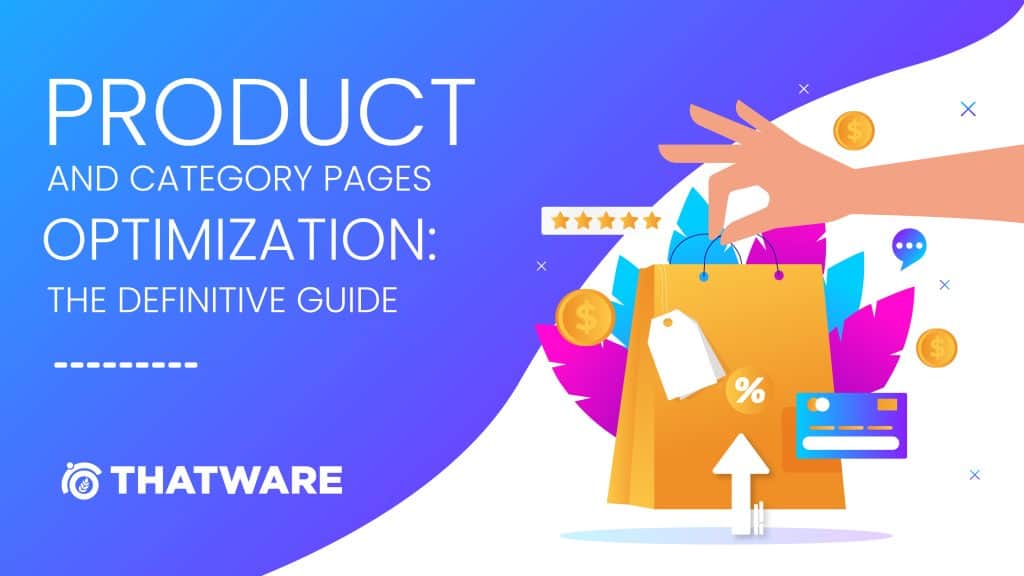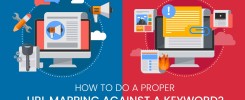SUPERCHARGE YOUR ONLINE VISIBILITY! CONTACT US AND LET’S ACHIEVE EXCELLENCE TOGETHER!
Product pages are extremely significant and frequently serve as the main focus of conversion optimization efforts. However, they are merely one piece of the jigsaw, one step along the way. There is a road that, like any journey, maybe bumpy and erratic. On the other hand, businesses may better clear that route for their potential clients by using category pages.
In this post, we’ll go through the apparent and not-so-obvious benefits of category pages. We’ll also discuss how businesses may make the most of their efforts in creating high-converting category sites.

What Is A Category Page?
A category page is a page that serves as a gateway to similar items in that category. The product taxonomy appears in the navigation menu of an online store as the primary categories and subcategories, the next level of pages after the homepage. Each category page provides a clear picture of all the items associated with a specific topic or theme.
Purpose Of A Category Page
If it hasn’t already become evident, the category page’s objective is to make the eCommerce site as useful and easy as feasible. When it comes to running an online business, connecting all initiatives is to reduce friction in the purchasing experience. Businesses aim to remove every impediment in the way of potential customers.
Category pages assist on both sides in leading them to the add to cart and payment stages. Shoppers can and quickly determine if the site is promising for them. At the same time, businesses may use the category page to optimize sales, showcase branding, and utilize the area for merchandising.
What Is The Significance Of Category Pages?
When you look at the statistics, it’s remarkable how big your categories pages can influence. The most noticeable result is the increase in traffic and search rankings. According to data, category pages outperform product pages across the board. Category sites outperformed product pages in rankings for 19% more keywords.
What Are The Advantages Of Having A Category Page?
As significant as categories pages are, what are their specific perks and advantages? While this is not an entire list, well-optimized category pages provide several benefits for Search Engine Optimization, overall user and customer experience, and driving a brand’s marketing and merchandising efforts.
SEO Benefits From Category Pages
Category pages have a significant part in boosting traffic, which is one of its most important advantages. The structure of an eCommerce site is made up of category pages. Categories fueled by the product taxonomy or hierarchy serve as the glue between the primary brand web page and the remainder of the product tree.
When looking for a product, categories in a hierarchical structure let clients move from a general topic to a particular one. The same is true before users ever arrive at your store’s website. When seeking a vague product, customers prefer to enter more generic inquiries into search engines.
- Category pages enhance the user experience.
The obvious advantage of category pages for customers is that they provide an intuitive atmosphere. Customers may easily limit options from a large product variety by using well-optimized category pages on powerful navigation. Before making any final judgments, shoppers want to get a broader bird’s-eye perspective of all the items in categories.
- Assist in directing marketing strategy
Category pages provide a lot of room and opportunities for promotion. Businesses have a lot of leeway in designing category and subcategory sites, including extra items that may adorn them. Allowing them to direct and contribute to overall content marketing is a definite method to boost conversions.
- Offers a merchandising space.
Along with marketing, category pages provide opportunities to present items in the most effective way feasible. Businesses may establish a superior merchandising strategy online by using data to inform the process. Adding sections such as ‘Featured Products,’ ‘Popular Products,’ ‘Top Picks,’ or current discounts or sales makes the most of the category page.
Types Of Category Page
A category page’s definition is self-explanatory. It is easily accessible on any internet page (click any top-level categories on the navigation menu). However, its design elements are not fixed in stone. Various online retailers may opt to customize their category pages in whatever way they deem suitable. As a result, defining a “good” or “optimized” category page is far more difficult than defining a “good” or “optimized” product page. Of course, not until we look at the analytics.
There are at least three distinct sorts of product category page designs that a website may apply.
- Traditional: includes product listings with the filter sidebar.
- Intermediary: a landing-page-style page that displays subcategories but does not include any product listings.
- Blended: a combination of the finest of both worlds.
Traditional Category Pages
This category page is more of a search results page for all related goods in a category than a page. This design is better suited for firms with fewer complicated products. They may, for example, not have many subcategories. As a result, businesses may rely on a sophisticated filtering mechanism that customers can use to limit the items in the category.
When there are several subcategories, the important tags may be shown at the top of the page.
Intermediary Category Pages
A category page with an interim style is more of a landing page than a search results format. To put it another way, there are no product listings. Instead, the websites contain a slew of ads, components, and content to provide customers with thorough information about the category.
Blended Category Pages
A hybrid category page has elements of both of the previously discussed designs. It employs the necessary product listing mix placed on an interim style page. This is best achieved by breaking up blocks of text on the page with a line of highlighted or popular product listings. Most importantly, this shortens the path to the most frequently searched-for items, leading users directly to the product pages.
How to Improve the Performance of Your Category Pages
If, after reading all of this, you’re still wondering how to optimize a category page, you’ve come to the correct spot. While there are several tools and resources available to help you figure out how to optimize your category pages, one thing is certain: optimization is not an option. You’re wasting a lot of potential if you’re not making the most of your category pages.
- Metadata
Metadata, like a beacon, are HTML components of a webpage. They shout to web spiders about the content of the page. Metadata includes the website’s title tag, the topic header in search results, and meta description and heading tags (H1, H2, H3, etc.).
- Category Page Title Tags
Titles serve as the foundation for improving metadata and carefully inserting keywords. It all starts with keyword research for outstanding titles. It’s not only a matter of determining which keywords are most appropriate to the product type or category subject. It also has to do with search intent. What drives people to look up a query? Consider the underlying purpose, which they may not be aware of.
Combining the primary category term with 1-2 of the most significant qualities (or benefits) to generate the best title tags.
Meta Description
While meta descriptions may not directly influence search rankings, they are vital for attracting the proper kind of attention.
A meta description is information that appears beneath the title link on search results pages. Before users click, it informs them of the link’s fundamental function and subject. Finally, meta descriptions are crucial for letting people know if a link to a category page has the information they want.
Headings
Your category pages, like any other webpage, require a hierarchical structure of headings and subheadings. These titles break up the substance of the page, making it easier for shoppers to comprehend. More crucially, each heading and subsection contains more precise keywords that assist draw search engine visitors.
Headings might change based on how your category pages are laid up. However, because they are a means to integrate exceptional copywriting, they must be relevant and intriguing in general.
Description of the category page
Typically, an optimized category page will begin with a concise description above the fold. Even if a store’s category pages are merely the search results page with all goods labelled under that category, a description may still be included for informative and SEO purposes.
The category description is a lengthier chunk of 1-2 paragraphs that detail the categories as the product description. It comprises high-quality writing as well as all of the product category’s key features and advantages.
Furthermore, including internal connections to other relevant product categories in category page descriptions is a good method to incorporate internal links to other related product categories.
Images of products for category pages
Visuals allow companies to stand out on category pages. While product pages provide a creative expression, category pages provide an opportunity for unified, better branding. That means you can’t afford to overlook the significance of setting out high-resolution photos.
The photographs you choose for various items should be of the highest, best quality that you have. More importantly, it is preferable if product photos are of the same kind.
Other Visuals
Category pages will have a range of well-placed design elements in addition to excellent product photos.
Category pages are ideal for showcasing marketing content in addition to any photos associated with featured items. Beautifully created banners announcing subcategories are pleasing to the sight. Banners are essential components for both design and conversion improvement. A high-quality banner should always be a vehicle with a call to action that encourages the buyer to learn more. The combination of design, branding, and text results in very evocative banners that elicit clicks.
Featured content
What exactly is highlighted content? On category pages, you have the option of displaying goods in that category or subcategory that you wish to stand out for whatever reason. Typically, the product listing will show above the fold, directly behind the header, banner, or category description. While creating next-level, quality items on category pages may need some technical and design skills; it contributes to the site’s professional appearance.
Popular items function similarly, employing social evidence to persuade customers that such things are worth investigating.
Final Thoughts
Building and devoting a lot of effort to your category pages can only help you build a good eCommerce site. Optimizing category pages for your business has a significant impact on clicks on search engine results pages, increasing click-through on the pages themselves, facilitating a seamless exploration of your eCommerce stores, and leading shoppers quickly to the products they need without wasting their time.
FAQs –
1: What is a category page in eCommerce?
Answer: A category page in eCommerce serves as a gateway to a collection of similar products within a particular category. It helps users navigate an online store by organizing products into primary categories and subcategories. This allows customers to easily find items associated with a specific topic or theme, providing a clear picture of all related products on the site.
2: Why are category pages important for eCommerce websites?
Answer: Category pages are crucial for eCommerce websites because they enhance user experience and drive conversions. They help reduce friction in the purchasing process by allowing customers to navigate the site efficiently. Additionally, category pages improve SEO performance, increase traffic, and provide opportunities for marketing and merchandising by showcasing featured products, promotions, and branding.
3: How do category pages impact SEO?
Answer: Category pages significantly impact SEO by boosting traffic and search rankings. They serve as the structural foundation of an eCommerce site, allowing search engines to index and rank the pages more effectively. Category pages often rank for more keywords than product pages, driving more organic traffic. The hierarchical structure of category pages also helps users find products through generic searches, further improving SEO.
4: What are the different types of category page designs?
Answer: There are three main types of category page designs:
- Traditional Category Pages: These pages display product listings with a filter sidebar, suitable for businesses with fewer subcategories.
- Intermediary Category Pages: These pages resemble landing pages, showcasing ads, content, and subcategories without product listings.
- Blended Category Pages: These pages combine elements of both traditional and intermediary designs, featuring product listings interspersed with informative content and promotions.
5: How can businesses optimize their category pages?
Answer: Businesses can optimize their category pages by focusing on several key elements:
- Metadata: Use relevant title tags, meta descriptions, and headings to improve search engine indexing and user engagement.
- Category Page Descriptions: Provide concise and informative descriptions above the fold, including key features and benefits of the product category.
- Product Images: Use high-resolution, uniform images to enhance visual appeal and branding.
- Visuals and Banners: Incorporate well-designed banners and other visual elements to attract attention and encourage clicks.
- Featured Content: Highlight popular or featured products to guide users toward key items.
6: What role do metadata play in category page optimization?
Answer: Metadata, including title tags, meta descriptions, and headings, plays a critical role in category page optimization. They serve as signals to search engines about the page’s content, helping to improve indexing and rankings. Well-crafted metadata can also attract users’ attention in search results, increasing click-through rates. Effective use of metadata ensures that category pages are search engine-friendly and user-friendly.
7: How can category pages enhance the user experience?
Answer: Category pages enhance the user experience by providing an intuitive and organized browsing environment. They allow customers to filter and narrow down product options from a broad range of items, making it easier to find what they want. Well-optimized category pages with clear navigation, high-quality images, and informative descriptions help users make informed decisions and move smoothly through purchasing.
8: What are the marketing benefits of category pages?
Answer: Category pages offer significant marketing benefits by providing space for promotions and branding. Businesses can use category pages to display featured products, special offers, and seasonal promotions, driving conversions and sales. Additionally, category pages include marketing content, such as banners and calls to action, which can engage customers and encourage them to explore further.
9: How do category pages support merchandising efforts?
Answer: Category pages support merchandising efforts by allowing businesses to present products most effectively. Businesses can create a superior merchandising strategy by using data to inform the placement of featured products, popular items, and promotions. Category pages also provide opportunities to highlight specific items, making it easier for customers to discover and purchase them.
10: What are the best practices for improving the performance of category pages?
Answer: To improve the performance of category pages, businesses should follow these best practices:
- Conduct Keyword Research: Identify relevant keywords and incorporate them into titles, descriptions, and headings.
- Optimize Visuals: Use high-quality product images and visually appealing banners.
- Provide Clear Descriptions: Include informative and engaging descriptions highlighting the product category’s benefits and features.
- Implement Effective Navigation: Ensure category pages have intuitive navigation and filtering options.
- Highlight Featured Products: Showcase popular and featured products to attract attention and drive sales.
Monitor and Analyze Performance: Regularly review analytics to identify areas for improvement and optimize accordingly.


